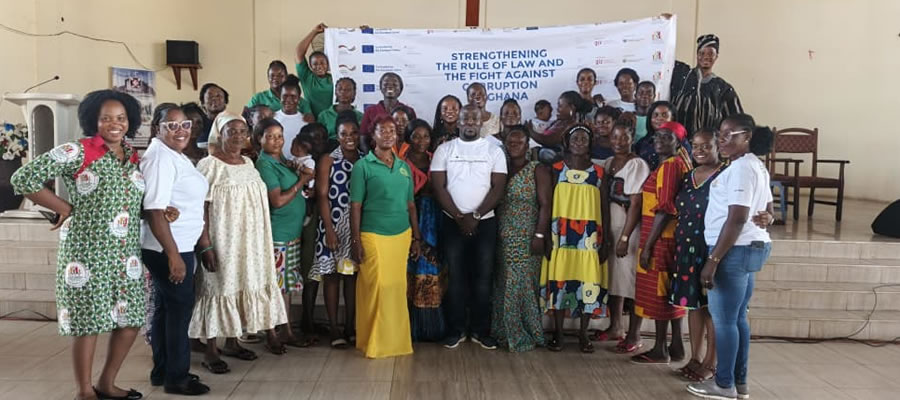

DISABILITY
Introduction
Persons with disabilities (PWD) are those who are unable to or are restricted in the performance of specific tasks/activities due to loss of function of some part of the body as a result of impairment or malformation (GSS, 2012). As a result, PWD face a wide range of life challenges because disability, in whatever form or type, can reduce an individual’s ability to function to his/her full potential.
In Ghana, PWDs are marginalized and suffer from discrimination on account of their disability status. They are mostly regarded as less productive and not capable of contributing to development compared to their non-disabled counterparts. Accordingly, they are often seen as a burden on society and their unfortunate circumstances are viewed sometimes as a curse or punishment. Furthermore, they have poorer health status, lower educational achievements, less economic participation and higher levels of poverty than people with no disabilities (World Health Organization, (2011). During the 2010 PHC data were collected on persons with disability. Discussed in this chapter are population with disability, types of disability, economic activity and level of education and literacy of population with disability.
Population with Disability
Persons with disability are 1,499 or 2.1 percent of the total population. Among females, 2.3 percent have disability compared to1.9 percent among males. The proportion of persons with disability in urban locality is 2.2 percent compared to 2.0 percent in rural locality (Table 6.1).
Types of Disability
Six types of disability are identified in the 2010 Population and Housing Census as shown in Table 6.1 and Figure 6.1. Sight disability is the most common type, 42.9 percent of the population with disability, followed by physical (34.2%), speech (17.6%) and hearing (13.9%). The lowest proportion is emotional disability (11.7%), followed by intellectual disability (12.1%).
Among females with disability, 45.2 percent have sight disability compared with 39.7 percent among males. The proportions of females with physical (35.5%), hearing (14.4%) and intellectual (12.5%) disabilities are higher than their male counterparts (34.2%, 13.9%, and 12.1%, respectively). The type of disability with a higher proportion among males than females is speech, 19.9 percent and 17.6 percent, respectively.
Disability and Economic Activity
Table 6.2 shows the population with disability and economic activity in the district. About 47.8 percent are economically active and the remaining majority of 52.2 percent are economically not active. Among males with disability, the economically active proportion is 51.8 percent and those who are not active are 48.2 percent compared with 45.1 percent and 54.9 percent, respectively, among females with disability.
About 44.9 percent of the economically active persons with disability are employed and 2.8 percent are unemployed. Among the economically active males, 49.4 percent are employed and 2.4 percent are unemployed compared with 42.0 percent and 3.1 percent, respectively, among females with disability.
The highest proportion of the employed (49.7%) is among persons with hearing disability, followed by sight disability (49.2%), speech disability (45.0%) and emotional disability (40.3%). The lowest proportion of the employed are among persons with intellectual disability (28.0%), followed by physical disability (29.5%).
Among males with disability, the order of proportions employed by type is hearing (59.3%), sight (54.1%), speech (48.1%) and physical (34.5%); among females, the order of the proportions employed is different; sight is (46.2%), emotional (46.1%), hearing (44.0%), speech (42.6%) and physical (26.4%).
Disability and Education
Literacy and education are fundamental indicators for a country’s human capital development. The collection of data on these indicators in a census is, therefore, significant for any country.
Table 6.3 presents the distribution of the population three years and older by level of education and disability type. The table indicates that about half (50.6%) of persons with various forms of disability in the district have never attended school compared with two in ten of the total population as well as among persons with no disability. More females with disability has never been to school compared with their male counterparts (59.3% and 38.4% respectively). Persons with Physical and intellectual disability are among the highest who have never been to school.
Date Created : 11/21/2017 8:36:28 AM












 facebook
facebook
 twitter
twitter
 Youtube
Youtube
 +233 593 831 280
+233 593 831 280 0800 430 430
0800 430 430 GPS: GE-231-4383
GPS: GE-231-4383 info@ghanadistricts.com
info@ghanadistricts.com Box GP1044, Accra, Ghana
Box GP1044, Accra, Ghana